Local farmers buck industrial ag trends, offer community reliable, affordable care and feeding
Berea Farmers Market, Berea Urban Farm, pioneers of the local fresh food movement

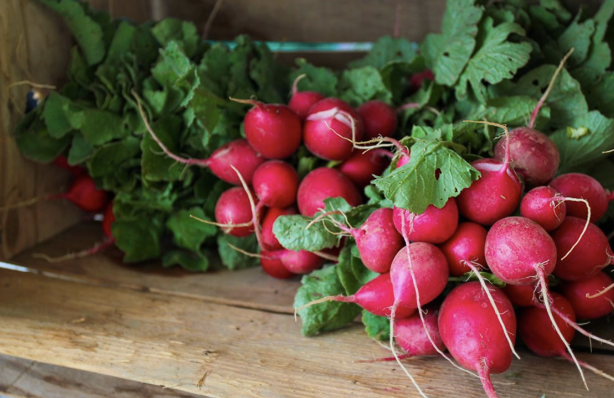
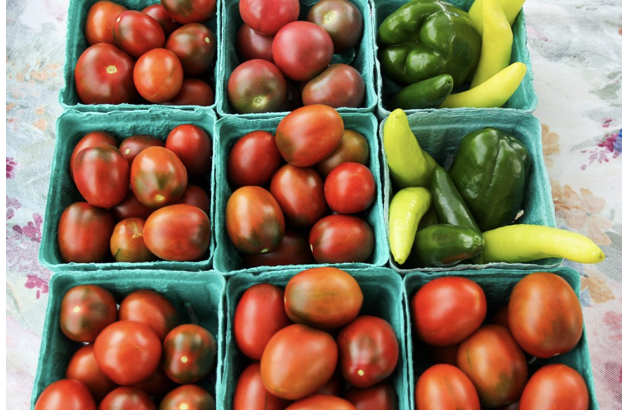
Tomorrow, the Berea Farmers Market begins its annual outdoor season, under the pavilion at the corner of Chestnut St. and Mt. Vernon Rd., weather permitting. Even if the opening is delayed by severe storms, it’s an important event for Bereans.
For more than fifty years, the Berea Farmers Market has led the way to support the health of our community by largely rejecting the mass production of food, providing Bereans instead with a variety of fresh, nutritious, locally grown produce that — ask anyone who shops there and they will tell you — has better flavor than industrialized food.
Along the way, other local farmers, including Berea Urban Farm, have joined the movement, helping to expand outreach not just to “foodies” who prize the superior taste of fresh food, but also to those whose lives are changed by gaining access to this kind of nourishment.
Even as the cost of food is now spiking, subject to the whiplash effects of tariffs, no tariffs, rising inflation, lowering inflation depending on the day, Berea’s local farmers are ensuring nourishing food is always within reach.
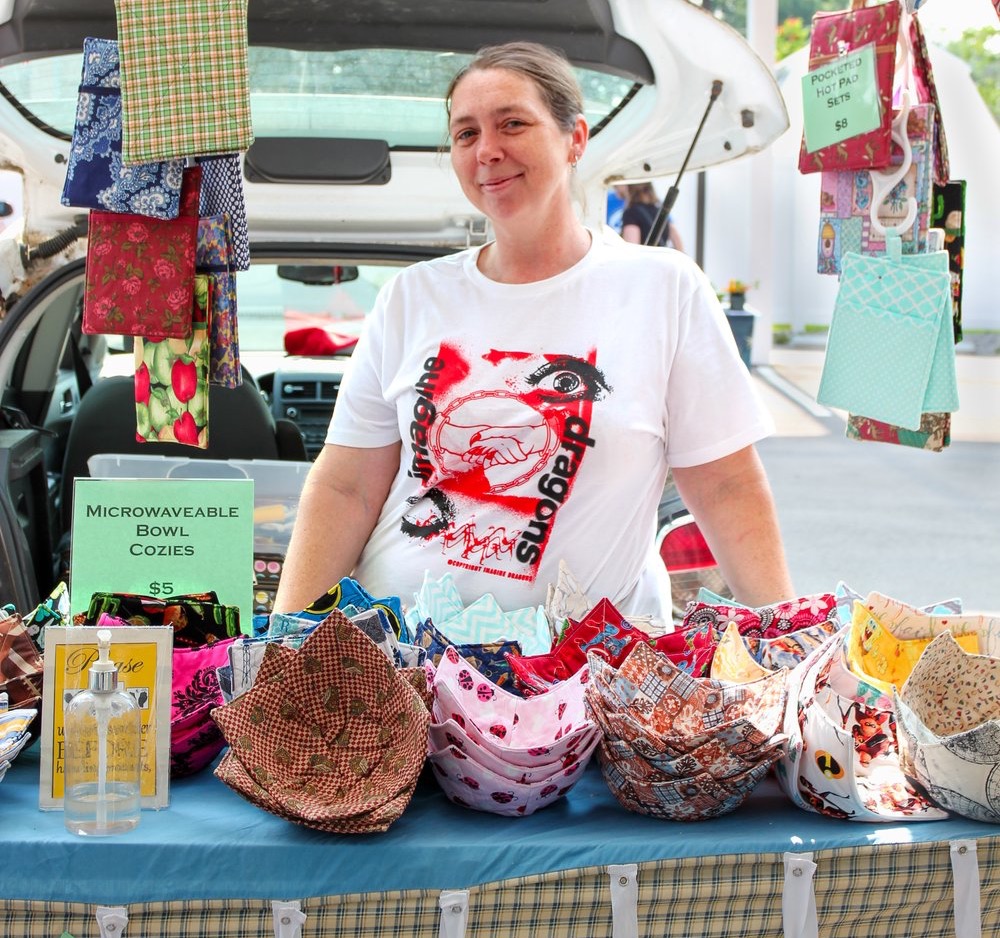
Essential community resource
Last year, the participating farms in the Berea Farmers Market cooperative helped feed over 300 households in our community, according to Gina Hudson, board president of the Market.
Distributed through a combination of federal and state programs, the Market helped cover the cost of feeding at least 268 households, mostly families, and 48 seniors, all of whom used a “double dollar” federal benefits program administered by the state.
“Kentucky Double Dollars is an EBT (electronic benefits transfer) matching program where customers can swipe their EBT card each week for up to 20 dollars and receive an additional 20 dollars,” Hudson told The Edge.
Three-quarters of these “doubled dollars” come from the Community Farm Alliance while the Farmers Market picks up the remaining quarter, according to Hudson.
These benefit dollars can be used at the Market to buy any perishable item, including eggs, meat and dairy, she said.
Last year, Hudson said that Double Dollars spent at the Market totaled $5,046, allowing participating families to put extra cash toward the kind of nutrition that helps fight chronic health conditions such as obesity.
That’s on top of the $5,439 in benefits Hudson said these customers used such as the federal SNAP (Supplemental Nutrition Assistance Program) funds that helps feed kids. An additional $690 in federal WIC (Women, Infants, & Children) Farmers Market Nutrition Program funds was distributed to 23 households, allowing them to also use about $300 in Double Dollars.
Seniors also receive Double Dollars through a debit card. Last year seniors in our community received $2,400 in supplemental nutritional funds matched by another $2,000 in Kentucky Double Dollars funds, Hudson said.
“I really rely on it,” Vickie King, 72, told The Edge about shopping the Market using the state’s Senior Farmers Market Nutrition Program.
King said she has been shopping the Market since 2016. “I rely on it for things I can’t grow myself. The quality of the food is so much better than what we have at the grocery store. I will buy canned tomatoes at the store, but never fresh ones. The only fresh tomatoes I will buy are from the Farmers Market,” she said.
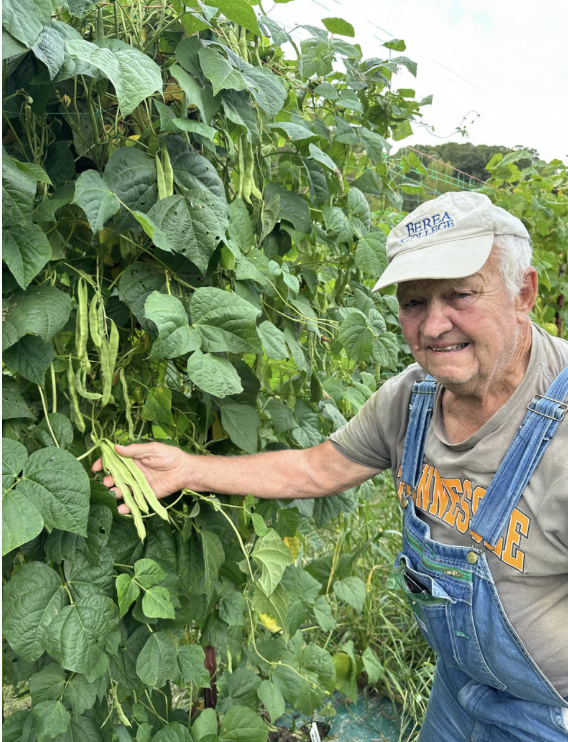
Dyed green tomatoes
Bill Best, the Market’s founder and patriarch, would approve of King’s assessment. An outspoken proponent of local farming, and a critic of industrialized agriculture, Best says mass produced tomatoes can’t compete with local ones.
“[Industrial farms] use ethylene gas to ripen tomatoes and make them red, so they pick them green and then they have no flavor,” Best told The Edge.
Best, who is 89, no longer runs the market but remains on the board of directors. Long retired from his many professorial roles at Berea College, Best is still active, and remains passionate about promoting the variety, taste and superior nutrition of produce traditionally grown in different regions of Appalachia.
As the author of two books on seed saving — a core activity of his crusade to preserve heirloom farming — and as the former director of the Sustainable Mountain Agriculture Center, Best is easily considered the father of seed saving in Appalachia. He is also the grower in his lifetime of over 1,200 types of beans.
Heirloom farming is a crucial activity, according to Best.
If the care and feeding of the populace were left only to corporations, we’d lose most, if not all, of our historical foods, and certainly the nutrition derived from them, he believes. With heirloom produce varieties, many of which are sold at the Farmers Market, the focus is on flavor and nutrition, according to Best.
“As modern produce growers have switched increasingly to machines, vegetables have to be tougher, so they are genetically modified,” he said. “Produce that is tougher is less nutritious because the focus is on being able to ship them for thousands of miles and stay shelf stable for 35 days.”
The result is a blandness, a sameness bred for mass production, nothing else.
“There’s no taste to them,” Best said.
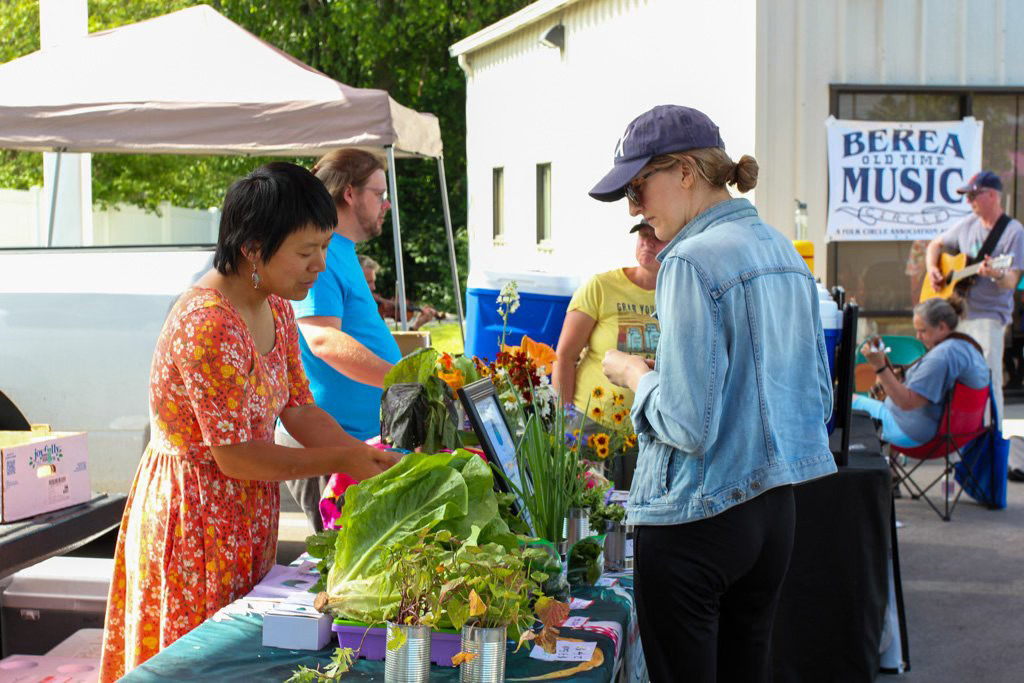
Solution to a problem
It’s the history of Appalachian farming for sustenance, not farming solely for profit, that prompted Best to found the Farmers Market.
“When I started it, I thought my family and several of our neighbors could provide real food at a time when things were costing so much in stores, but it wasn’t local stuff. It was food that was shipped in from California or Florida, or Mexico,” Best said. “It cost more but had less nutrition.”
He was perplexed by seeing so many people in Berea and its environs he knew had grown up in the mountains eating fresh from their family’s garden, now no longer staying vitally connected to their food source.
“A lot of them weren’t growing their own food, and they were depending on the grocery stores, or they lived where they couldn’t have a garden,” Best said. “Those were the people I was hoping to reach.”
Almost immediately, Best said other vendors wanted to join in, selling whatever produce was left over after putting by for their families, or maybe they came to sell their apple and cherry pies, and other items that, along with the variety of heirloom beans and other vegetables on offer, drew crowds.
“We did very well that first year,” Best said of the inaugural market that took place every Monday and Friday afternoon at Duerson Stadium. “And we’ve done well ever since. But we weren’t out to make a killing. We just wanted to earn a little something for our labor, and we wanted to give good food at an affordable price.”
Berea’s is the second oldest continuously running farmers market in all of Kentucky, the one in Lexington being the oldest. “We were members of the Lexington one, but I said to myself we could do a lot of the same stuff but maybe even better,” Best recalled.
Most annoying to him were the “penhookers”, vendors who bought their wares in Cincinnati or Louisville and then resold it at the market.
“We don’t do that,” he said, preferring that vendors at his market have an actual relationship with their product. Also, it ensures the produce is freshest.

Paying more to get sick
When Best opened the Berea Farmers Market in 1974, he was bucking a trend, one that has persisted ever since.
Since the mid-1970’s, farming has gone from mostly small, family-run farms, to a corporatized system that monopolizes our nation’s food supply from seed to plate. Even though there has been a surge in the number of small farmers nationally, corporate farming not only keeps pace with, but outstrips the local farms.
Just four international conglomerations oversee 80% of US agriculture and food supplies, a statistic that has increased annually ever since the Nixon administration’s agriculture secretary, Earl “Rusty” Butz, a full-on proponent of industrial agriculture, told farmers, “Get big, or get out!”
Concurrent with this trend has been skyrocketing obesity rates in adults in the US, rates that have tripled from about 15% to more than 40%. In US children, federal data show that obesity rates have gone from just over 1% in 1975 to over 17% in 2023. That’s 1 in 6 children who are faced with multiple health risks that obesity brings, including early onset type-2 diabetes, and a host of cardiometabolic disorders, as well as poor sleep, and higher rates of depression.
The reasons for these parallel trends are still debated — Is it lack of will power? Is it all the added sugar? Is it our desire for too much fat? — but increasingly, studies are bunking the notion that obesity is our fault, and instead linking horrible health outcomes to Big Agriculture’s methods of denaturing our food supply.
A 2019 clinical trial sponsored by the National Institutes of Health, established a causal link between ultra-processed foods and obesity. Study participants were placed on either an unprocessed or an ultra-processed diet. Think Berea Farmers Market vs. McDonalds. Meals were calorie-matched, and participants were told to eat as little or as much as they wanted. The group who only ate ultra-processed foods had worse health outcomes and ate more often than the natural foods diet participants in the study.
A review of ultra-processed foods and poor health outcomes published last year found that nutritionally empty, ultra-processed food was associated with 71% of all commonly reported poor health diagnoses. The study authors concluded that the more ultra-processed foods we eat, the higher our risk for chronic diseases like cardio-metabolic disorders such as diabetes type-2 and mental disorders.
The catch, however, as another study pointed out, is that most often, the more processed a food is, the less expensive it is, making it the most affordable for people in lower socio-economic brackets who also tend to have worse health outcomes than do their wealthier counterparts who can afford what once was free if you were to grow it yourself.
“It’s the high cost of cheap food,” Best said.
Meanwhile, the cost of the healthiest food — the food least processed and not mass produced — is now the most expensive thanks to its having been corporatized. A British study found that Americans pay 40% more for fruits and vegetables simply because of Big Ag supply chain costs.
It also costs more for us to eat foods once grown here but now grown in far flung places on the globe. Federal data show that in the past 20 years, the US has upped its imports of fruit and vegetables by 129% and 155% respectively. With tariffs the new warfare, the cost of these imports are expected to rocket, according to Reuters, as China and other nations retaliate against recent US tariffs imposed on these imports.
Food ‘Farmacy’
Over the last couple of years, Richard and Cheyenne Olson, co-founders of Sustainable Berea, which operates the Berea Urban Farm, a community supported agriculture organization on Adams and Grant streets downtown, developed an initiative aimed at the connection between a high food cost, poor diet and chronic illness.
Called The Farmacy, the program is intended to introduce low-income individuals with chronic illnesses to the healing powers of nutrient-rich fruits, vegetables and herbs, by supplying them to participants, weekly for three months at no cost. It also offers nutrition education and cooking classes.
Gretchen Bolton, who was diagnosed with multiple sclerosis 20 years ago, was involved in the Farmacy pilot study. Already a vegetarian, she said in an interview that having access to the abundance of fresh greens and other vegetables helps her with her energy levels.
“They give you so much food,” Bolton said. “It’s hard to use it all.”
Another perk, according to Bolton, is that eating a fresh foods diet helps her fight the inflammation that is associated with MS.
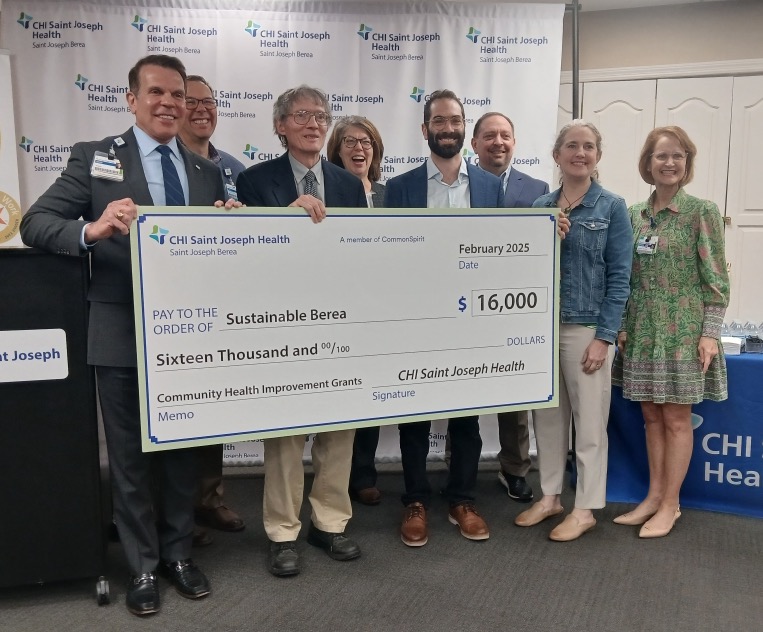
Earlier this years, BUF was awarded a community health improvement grant from CHI/Saint Joseph Hospital in Berea to help expand the Farmacy program.
Richard Olson told The Edge he is working with the University of Kentucky’s Madison County Extension office to study the Farmacy’s impact.
“[We’ll] survey attitudes toward fresh food in the diet, some basic nutritional knowledge, and the degree to which fresh foods are part of [the study participants’] diet,” Olson said.
Olson said the study is intended to track whether participants in the Farmacy develop new eating habits that they stick to beyond the initial 90 day program, and whether changes to their diet positively impacts other family members.
BUF has an extensive list of programs aimed at helping community gardeners benefit from growing their own food and sharing it with others. In addition to hosting dozens of on-farm workshops annually, BUF offers a Children’s Garden that helps kids connect to the realities of growing and eating real food, and helping them establish connections to their hyper-local environment, namely the very soil where their food comes from.
There is also the BUF Medicinal Herb Garden that grows over 20 medicinal herbs as the foundation for a series of annual workshops on growing, harvesting and using herbs in supporting health.
Material support for backyard farmers is provided with extremely low-cost, high quality soil, free from chemicals, starter plants, seeds, and even help building raised beds. Last year, Olson said BUF built and distributed 175 raised beds around the area, many to low-income families wanting to grow their own food.
Future squeeze
Since the Berea Farmers Market first opened, much has changed. The state now has a hand in regulating how it operates. There are more local vendors, and a wider variety of them. It is a nonprofit that requires fundraising to operate, and it is a partner to many organizations in town that offer a range of programs that support community.
What hasn’t changed is the need to provide affordable, nutritious foods to citizens without gardens of their own or the means to access the wholesome foods that once upon a time in Appalachia, nearly everyone grew for themselves and their families.
This is currently getting harder to do, according to Hudson, who said she won’t let that stand in her way of running the Market’s cooperative
“We’ve had a couple of dips in funding availability, which isn’t going to stop us,” Hudson said. “We’ll find a way to make it work. We are doing different kinds of fundraising this year, trying to supplement what we can, because we do not want to go backwards.”
Federal funding freezes loom, and some sponsors have withheld their support this year, citing economic uncertainty, according to Hudson. “We are concerned, but none of our programs have been cut. There was definitely uncertainty during funding freeze, though. We are currently on hold for a few new programs as they are still frozen,” she said.
Meanwhile, the current administration has just cut a popular bipartisan program that subsidized public schools’ purchase of food from their local farmers, while at the same time signaling a deal to subsidize the top 1% of farms run by Big Ag, as happened in 2021 when Big Ag screamed loudest about lost profits due to trade wars.
“My farmers want to know, ‘How is this “winning”?’,” said Hudson about these policies. “But my egg farmers are happy at least. They don’t have any worries of bird flu and are selling eggs like crazy.”
Whatever happens, Hudson said, “We will just keep pushing forward. I think we’re going in the right direction.”
The Edge is your hometown source for real journalism. Become a paid subscriber and support this kind of work.
Update: This story was updated on Friday, April 4, 2025 at 3:00pm, to reflect Vickie King’s correct age, and again at 7:46pm on Saturday, April 5, to reflect the role of the Community Farm Alliance in the EBT cards.
